Phantom of the Rue Morgue (1954)
Directed by: Roy Del Ruth
Written by: Edgar Allan Poe, Harold Medford, James R. Webb
Starring: Claude Dauphin, Karl Malden, Patricia Medina, Steve Forrest
USA
AVAILABLE ON DVD
RUNNING TIME: 83 mins
REVIEWED BY: Dr Lenera
Paris around the turn of the 20th Century. A series of murders is taking place in the Rue Morgue district. Women are being found in locked apartments, having been killed by someone of ferocious strength, while witnesses all describe hearing a voice speaking in a different language. Inspector Bonnard of the gendarmerie is initially baffled. He first suspects a sailor named Jacques before fixating on psychology professor Paul Dupin. Evidence certainly links Paul to the killings, and he’s eventually arrested while supposedly fleeing even if he was actually chasing the murderer, but Paul is insistent that he’s being set up by somebody – though who could it be, and for what reason?….
A few months ago I reviewed Eureka Entertainment’s Three Film Edgar Allan Poe Adaptations Starring Bela Lugosi set which included the 1932 version of The Murders In The Rue Morgue which very loosely adapted Edgar Allan Poe’s tale of mysterious killings and a precursor to Sherlock Holmes solving it all. In the course of doing my research, I learnt that, while the story has been filmed several other times under its title, 1954’s Phantom Of The Rue Morgue was more of a direct remake of Robert Florey’s messy but fascinating effort, so of course I decided to obtain it on disc for as little money as possible. The main difference I was prepared for was that the lurid pre-code ingredients of the original wouldn’t be present, so I wasn’t at all surprised not to hear any mention of “mixing blood” [mating a gorilla with a human] in this version. The elements of sadism and the use of drugs are entirely removed, which undoubtedly takes away a little of the fascination, though there’s rather more blood in the many corpses than is usual for the period. Its highly pacey first half suggests a second half [and we know it’s two halves because the Italian DVD comes with an ‘intermission’ half way through, a common thing in Italian movies for many decades though rather odd to some of us others, especially when the film is only around an hour and a half long] that will be quite something, though actually it then slows down before picking up right near the end. But it’s probably a more all-round entertaining piece than the 1932 film, and is certainly more coherent [the older one underwent a huge amount of re-editing and some re-shooting], even if it only sometimes has some of its undeniable artistry; but then one wouldn’t expect German Expressionism to still be a major influence on horror movies.
American cinema was in the middle of its first 3D fad, with horror and science fiction being obvious choices for the format. Warner Bros. saw great commercial success with the previous year’s House Of Wax, which was a remake of 1933’s The Mystery Of The Wax Museum. It was therefore understandable that, as a follow-up, they’d choose to remake another ’30s horror, though the screenplay by Harold Medford and James R. Webb follows Poe’s story considerably more than I expected; in fact Phantom Of The Rue Morgue comes across like a combination of the Poe tale and the 1932 film, though there are more murders and the villain is now a mad zookeeper who also happens to be a psychiatrist, instead of a mad scientist. One cast member from 1932 returned; veteran ape suit wearer Charles Gemora as the gorilla, this time called Sultan. Gemora usually went un-credited for his troubles and was here, though he’d suffered a heart attack in 1943 which limited his screen time in the ape costume, so he performed in his suit only for scenes when Sultan was relatively still, any strenuous work being done by a stuntman. Shot as usual for the time entirely in the studio, it was filmed with lenses and lighting designed to accommodate the 3D process, which meant that 2D prints had to be struck from a second generation negative. Therefore TV and home media versions were blurry. By the time of its theatrical release, the public had already lost interest in 3D and box office wasn’t very good.
The titles unfold after we see the shadow of something moving around on some rooftops, then some woman is running up and down a street yelling, “Help! Police!” She’s found a mangled body, but Inspector Bonnard thinks that this is a crime of passion [in a way, he’s right] and that the killer will kill again. He has a Maltese scarf that the killer left, but not much more to go on. Maltese sailor Jacques, while looking and acting like a real rough type, is too obviously a red herring, isn’t he? At a fairground, a knife-thrower called Rene is angry because the tied-up girl he’s throwing knives at is not returning his interest. Consequently he seems to be taking less care than usual, the girl gets frightened, and consequently has one of her arms cut with one of the knives. She goes home to find her window open, then opens her cupboard and screams at something. Lots of people outside gather to be greeted by a man crashing through a window and on to the ground dead beside them. The dead girl is wearing a specific bracelet just like the first one did. Rene is the obvious suspect, especially since he has no ear lobes which according to Bonnard means that he’s more likely to be a criminal than if he did have them, and another circus performer who’s been spurned by Rene seemingly wants to see him arrested. But Bonnard takes an instant dislike to Paul Dupin [the character not a detective as in Poe even though he solves more of the case than Bonnard does], and several little things lead him to seriously suspect him when a locket that Paul gave his fiancee Jeanette turns up on the next murder scene. Meanwhile zookeeper/fellow psychologist Dr. Marais goes on about all humans having murderous impulses but how most of us control them, and is doing some rather unethical experiments with mice to prove his theory. However, the shadows we see of the murderer and people’s confused descriptions seem to point to it being not human at all.
To be fair the mystery is quite well sustained for the first half, and the posters not giving away the nature of the culprit would have helped in keeping 1954 cinema goers guessing as long as they had no knowledge of Poe. And even if you realise very quickly that an ape is involved, who’s using the creature and why does he want all these women dead? It’s a frequent problem when reviewing a film involving a mystery for someone writing about it; does he or she give stuff away or not? With modern films I tend to hold back, with older films less so, though I’m far less spoiler-ific than I used to be. With this one, the man behind the monster is revealed at the start of the second half, so I thought to hell with it. The forward momentum of the first half dissipates as we spend more and more time with Dr. Marais, a lonely guy who lost his wife some time ago and dedicates a whole room of his house to her. We sympathise for a few moments, until a darker side to Marais quickly surfaces. This part of the story would have worked much better with some restructuring, introducing Marais and his background almost immediately so that we would feel his sorrow more and the shock of his mania is more of a surprise when revealed much later, though the irony of him basically talking about himself in front of some students isn’t lost. Like many psychopaths, his arrogance level is very high; he’s probably convinced that he’s superior to others and will therefore never be caught. Karl Malden, usually in more prestigious fare around this time such as A Streetcar Named Desire and On The Waterfront but probably pleased to be top billed, surprisingly underplays the role and creates a curiously relatable fiend. His reason for wanting all these women dead is so very basic and also the reason why so many men go off the rails.
The gorilla suit, while always looking like a gorilla suit, is a good one, and Gemora’s ape mannerisms are meticulous. Fortunately they don’t repeat one of the big mistakes of the 1932 version which replaced the close-ups of the gorilla mask with those of not even a real gorilla but a real chimpanzee – and a rather cute, friendly-looking one at that. We don’t even get many really close views of the mask, which is probably a good thing, but Gemora’s suit still looks in decent condition despite it being the one he’d worn for ages. The ability of gorillas to swing and jump leads to the film’s funniest scene when Bonnard, still convinced that Paul did it, gets a trapeze artist to perform an escape from the apartment of one of the victims, hoping that it would be an easy feat. However, it proves to be harder than he expected. Bonnard’s steadfast obsession with Paul is rather amusing, the incompetence of the character seemingly a wry answer to Poe’s genius crime solver. Claude Dauphin, the only French actor in a film set in France and therefore the one whose accent therefore sticks out as nobody else seriously attempts one, is great in the role. The sets give a standard old Hollywood approximation of Paris, along with the odd hint of prostitution, something obviously more acceptable in a different country; though why did they have to give nearly every single male character the same kind of moustache? Most interesting are the rooftop shots, where the design does recall the crazy look of the rooftops in the 1932 film even if it’s not as excessive. Director Roy Del Ruth doesn’t quite make the most of a chase sequence nearly half way through on top of the apartment blocks, and the mediocre climax doesn’t even use this setting at all, content with having a very scaled down King Kong rehash up a tree.
I must admit, the film didn’t look as blurry as I expected to me; maybe the Italian DVD is from a major restoration though I could find no information about this. Being as it was shot for 3D back when 3D was trying to be no more than a gimmick, we get things like thrown knives, a dead body hanging inside a chimney, even balloons thrust out into the audience’s faces. I don’t really mind this, since I’ve always seen 3D as being basically no more than a novelty and a way to get people to pay more for tickets, so even in 2D it’s nothing more or less than a fun addition. Phantom Of The Rue Morgue is a little better than its reputation; it manages to balance mystery, bloodshed, psychology and even some melancholy reasonably well even it never succeeds in getting really good. And, seeing as horror generally was tame in the ‘50s until a certain British studio upped the ante considerably, it’s quite bloody; what we see of those corpses is pretty nasty, and one murder scene set in a studio gives us a huge dollop of red paint as a substitute for blood splashing onto a wall – though you’d have thought by now writers would have come up a reason for the monster abducting the heroine other then it presumably fancies her. What is it about male gorillas that seems to make them lust after human females? My enquiring mind wants to know.

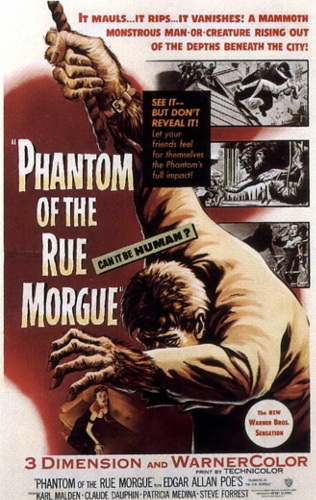
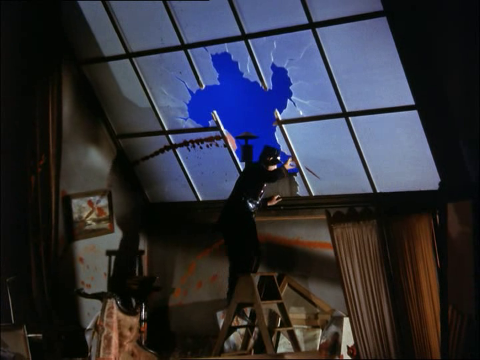
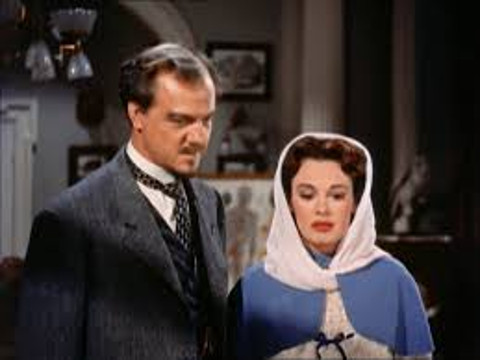



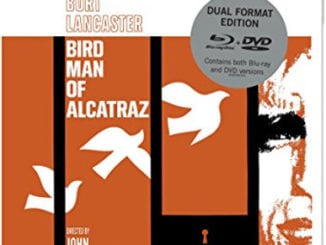
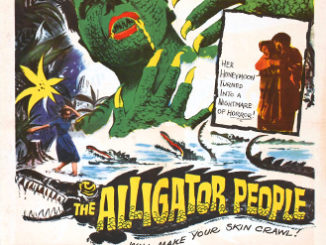
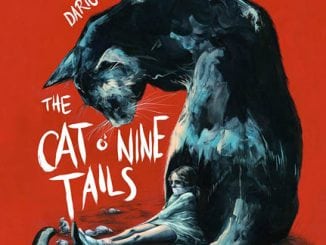
Be the first to comment